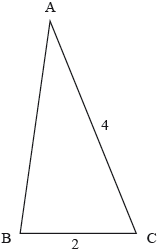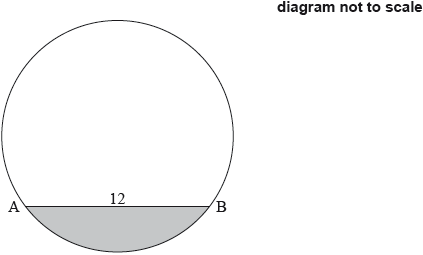| Date | November 2021 | Marks available | 3 | Reference code | 21N.1.SL.TZ0.2 |
| Level | Standard Level | Paper | Paper 1 | Time zone | Time zone 0 |
| Command term | Calculate | Question number | 2 | Adapted from | N/A |
Question
The Bermuda Triangle is a region of the Atlantic Ocean with Miami , Bermuda , and San Juan as vertices, as shown on the diagram.
The distances between , and are given in the following table, correct to three significant figures.
Calculate the value of , the measure of angle .
Find the area of the Bermuda Triangle.
Markscheme
attempt at substituting the cosine rule formula (M1)
(A1)
(accept rad ) A1
[3 marks]
correctly substituted area of triangle formula (M1)
A1
Note: Accept from use of . Other angles and their corresponding sides may be used.
[2 marks]
Examiners report
Most candidates were successful at selecting the cosine rule formula in part (a). In most cases, the cosine rule formula was correctly substituted. Some candidates found it hard to choose the correct side to obtain the required angle. Most of the candidates scored one or two marks out of three in this part. In part (b) some candidates assumed the triangle was right angled and used instead of . In part (b) many candidates who answered part (a) incorrectly were able to recover. Many candidates managed to score full marks in this part despite an incorrect answer in part (a). Some found angle or in part (a) but used the correct sides to obtain the correct area. Final answers given in calculator notations (such as ) scored at most one mark out of two. Calculator notation should generally be avoided; it is considered too informal to earn A marks, and although it can imply a method and earn M marks, we advise that candidates still provide the necessary commentary to support any GDC notation.
Most candidates were successful at selecting the cosine rule formula in part (a). In most cases, the cosine rule formula was correctly substituted. Some candidates found it hard to choose the correct side to obtain the required angle. Most of the candidates scored one or two marks out of three in this part. In part (b) some candidates assumed the triangle was right angled and used instead of . In part (b) many candidates who answered part (a) incorrectly were able to recover. Many candidates managed to score full marks in this part despite an incorrect answer in part (a). Some found angle or in part (a) but used the correct sides to obtain the correct area. Final answers given in calculator notations (such as ) scored at most one mark out of two. Calculator notation should generally be avoided; it is considered too informal to earn A marks, and although it can imply a method and earn M marks, we advise that candidates still provide the necessary commentary to support any GDC notation.



